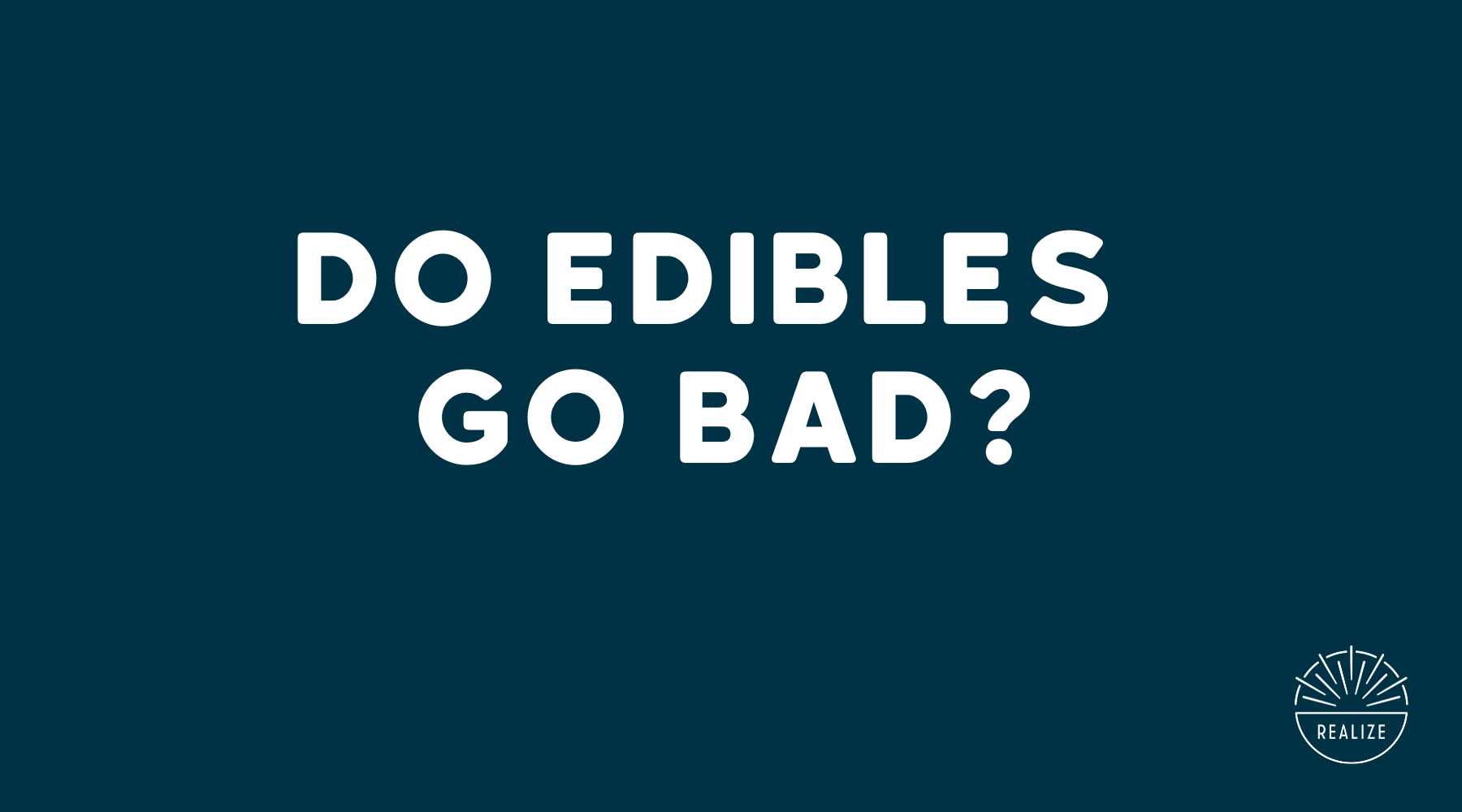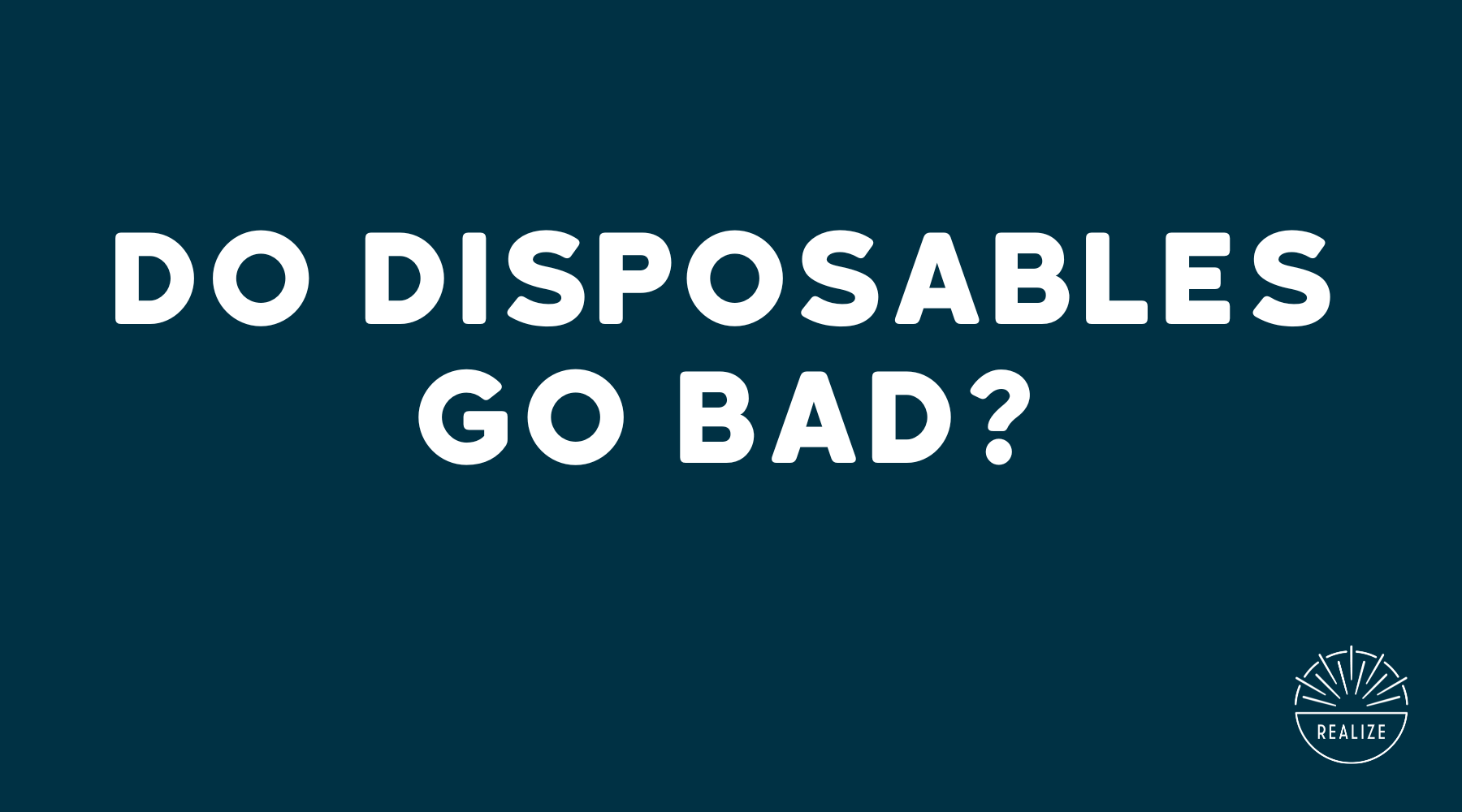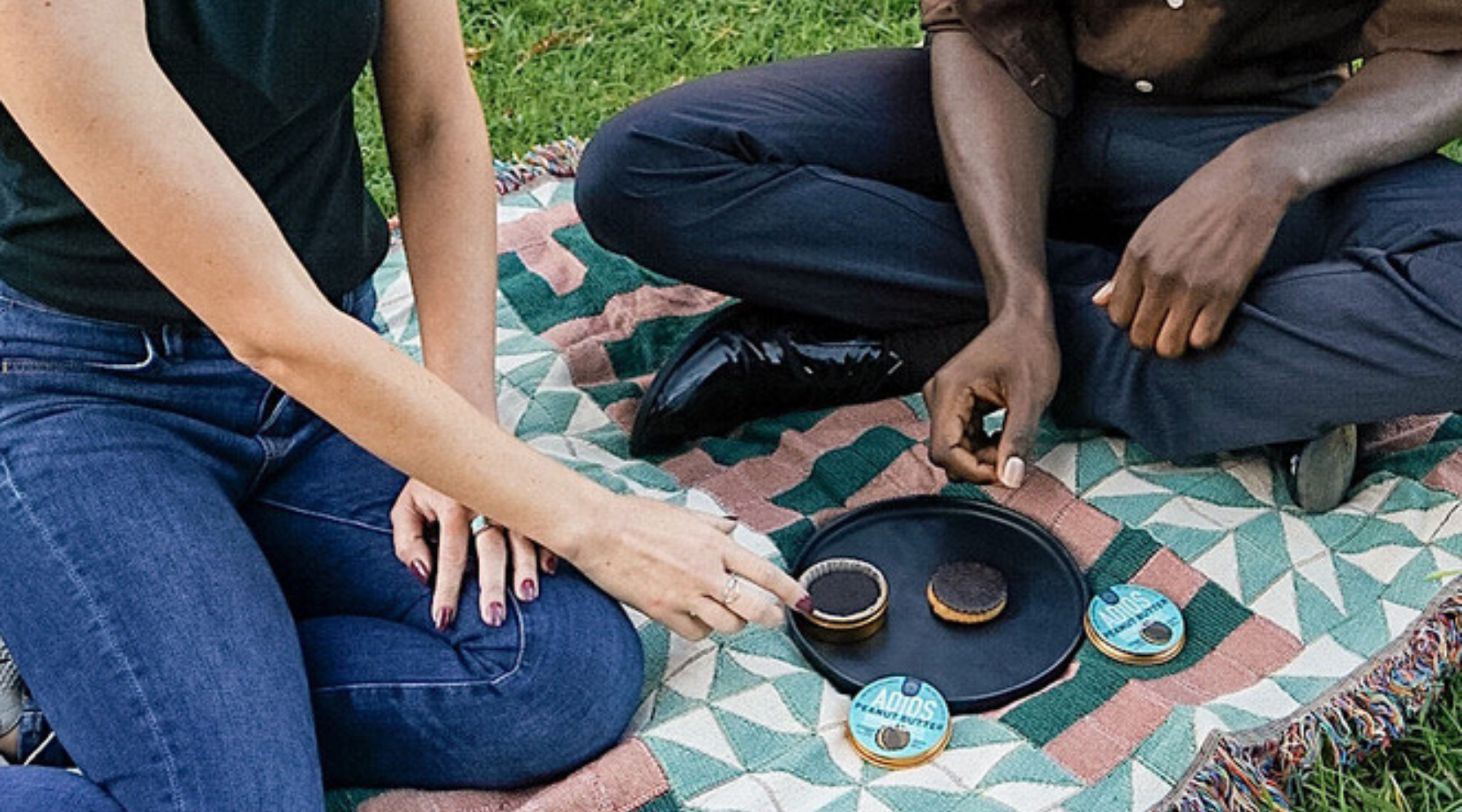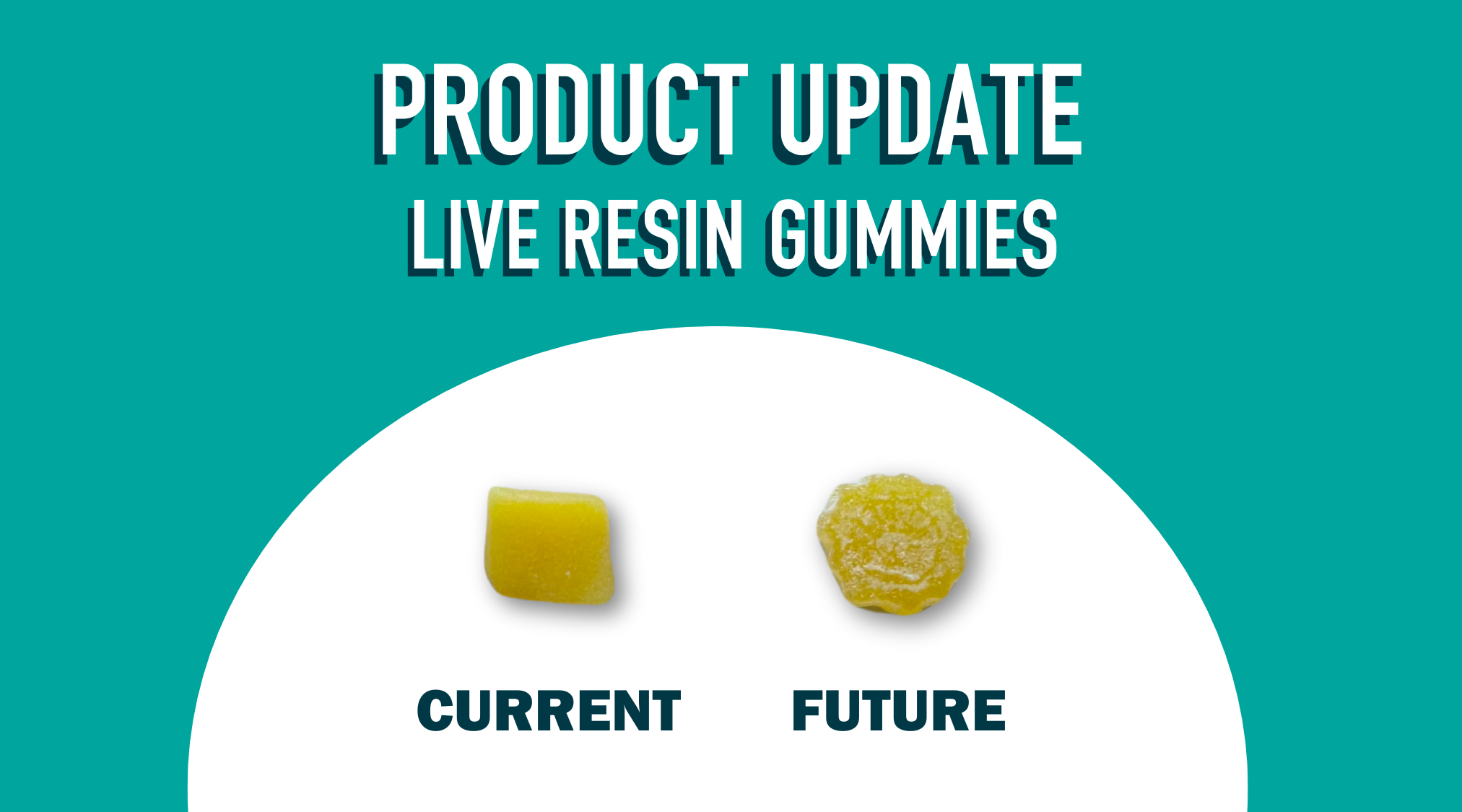Do Cannabinoid-Infused Edibles "Go Bad" and How to Store Your Edibles Properly?

Cannabinoid-infused edibles have become increasingly popular as a convenient and enjoyable way to consume cannabinoids like CBD, THC, and others. These edibles come in various forms, including gummies, chocolates, baked goods, and drinks, providing a discreet and tasty option for users. However, like any food product, cannabinoid-infused edibles can “go bad”. This leads to questions about their shelf life, how they can spoil, and how to store them properly to ensure they maintain their potency, flavor, and safety for consumption.
Do Cannabinoid-Infused Edibles "Go Bad"?
The simple answer is yes, cannabinoid-infused edibles can go bad. However, “going bad” can mean different things depending on the type of edible and how it's been stored. Like regular food products, edibles are susceptible to spoilage, and they can also lose their potency over time due to the degradation of cannabinoids.
Expiration and Spoilage
Just like any other food, cannabinoid-infused edibles have an expiration date. This date is typically based on the shelf life of the food ingredients in the product. For example, baked goods like brownies or cookies infused with cannabinoids have a shorter shelf life than candies, mints, or even gummies. Once the expiration date has passed, the food components in the edibles may spoil, leading to changes in texture, taste, and smell. Spoiled edibles may become moldy, develop off-putting odors, or taste strange, all of which indicate they are no longer safe to consume.
Cannabinoid Degradation
Cannabinoids like THC and CBD degrade over time when exposed to environmental factors such as light, heat, and air. This degradation process reduces the potency of the cannabinoids, meaning that the effects of the edible may be weaker than when it was fresh. While cannabinoid degradation won't make the edible harmful to eat, it will impact the desired effects.
For instance, if you're consuming a THC-infused gummy that has been improperly stored or is past its prime, you might not experience the same intensity of effects as you would with a fresher product. Cannabinoid degradation is a gradual process, but it can be accelerated by improper storage.
Flavor and Texture Changes
As edibles age, their flavor and texture can change. This can happen even before the expiration date if the edibles are not stored correctly. A gummy that was once chewy may become hard or sticky, while a chocolate may develop a white film known as “bloom”, which occurs when the cocoa butter separates from the chocolate. Although these changes may not affect the safety of the edible, they can make the product less enjoyable to consume.
Changes in flavor are also common with edibles that contain natural flavorings or essential oils, as these ingredients can break down over time, leading to a dull or off-taste. Additionally, artificial flavorings and sweeteners in some edibles can degrade, resulting in a less appetizing experience.
Edible Packaging and Shelf Life
The packaging of cannabinoid-infused edibles plays a significant role in determining their shelf life. Properly sealed, airtight packaging helps to protect edibles from exposure to air, light, and moisture, all of which can accelerate spoilage and cannabinoid degradation. Edibles that come in resealable bags, vacuum-sealed pouches, or containers with desiccant packets (to absorb moisture) generally have a longer shelf life than edibles stored in simple plastic or paper packaging.
When you purchase edibles, it's important to check the expiration date and the quality of the packaging. If the packaging looks damaged or the product seems compromised, it's best to avoid using it.
Signs Your Edibles Have Gone Bad
Knowing when your cannabinoid-infused edibles have gone bad is essential for both safety and ensuring that you get the most out of your product. Here are some common signs that your edibles may no longer be good to consume:
- Four Odor: If your edibles have developed a foul or off-putting odor, this is a clear sign that they have spoiled. This is especially true for baked goods or other products that contain perishable ingredients like butter, milk, or eggs. A musty or sour smell is an indication that mold or bacteria have started to grow, making the edible unsafe to eat.
- Mold or Discoloration: Visible mold or discoloration on your edibles is a definite sign that they have gone bad. This is more common with baked goods or chocolates, but it can happen with gummies and other types of edibles as well. Even if the mold is only on one part of the edible, it's best to discard the entire product, as mold spores can spread throughout.
- Hard or Sticky Texture: If your once-soft and chewy gummies have become hard, or if they are sticking together in a clump, this is a sign that they are past their prime. While this texture change may not make the edibles harmful to eat, it can make them less enjoyable and may indicate that they have lost some of their potency or flavor.
- Changes in Flavor: If your edibles taste different than they did when you first opened the package, this could be a sign that the flavorings have degraded. This is particularly noticeable with fruity or minty flavors, which tend to lose their vibrancy over time. If the flavor is significantly off, it's best to err on the side of caution and discard the product.
- Weaker Effects: If you're not experiencing the same effects from your edibles as you did when they were fresh, this could be a sign that the cannabinoids have degraded. While this won't make the product harmful to eat, it does mean that you're not getting the full benefit of the cannabinoids.
How to Store Your Cannabinoid-Infused Edibles Properly
Proper storage is key to ensuring that your cannabinoid-infused edibles remain fresh, potent, and safe to consume. By following these simple guidelines below, you can extend the shelf life of your edibles and avoid the unpleasant experience of eating spoiled or ineffective products:
- Keep Edibles in a Cool, Dark Place: Heat and light are two of the biggest enemies of cannabinoid-infused edibles. Exposure to high temperatures can cause the cannabinoids to degrade, and it can also affect the texture and flavor of the edible. Light, particularly UV light, can also break down cannabinoids and other compounds in the edible. To avoid these issues, store your edibles in a cool, dark place, such as a pantry or cupboard. If you're storing baked goods, it's especially important to keep them in a cool environment to prevent spoilage.
- Use Airtight Containers: Air exposure can cause cannabinoids to degrade, and it can also lead to staleness or spoilage of the edible itself. To keep your edibles fresh for as long as possible, store them in airtight containers. Resealable bags, vacuum-sealed pouches, or glass containers with tight-fitting lids are ideal for this purpose. If the original packaging isn't airtight, consider transferring the edibles to a more secure container.
- Store in the Refrigerator for Longer Shelf Life: For certain types of edibles, particularly baked goods or products containing dairy or other perishable ingredients, refrigeration can help extend their shelf life. Refrigeration slows down the growth of mold and bacteria, and it can also preserve the texture and flavor of the edible. Gummies, chocolates, and other candies can also be stored in the refrigerator to prolong their freshness. Still, be mindful that refrigeration may cause some products, like chocolates, to develop a white "bloom" due to changes in the fat content. This doesn't make the chocolate unsafe to eat, but it can affect the texture.
- Consider Freezing Edibles for Long-Term Storage: If you have a large quantity of cannabinoid-infused edibles and you don't plan on consuming them within a short period, freezing can be a good option for long-term storage. Freezing slows down the degradation of cannabinoids and preserves the freshness of the edible. To freeze edibles properly, make sure they are sealed in airtight, freezer-safe containers or bags. This prevents freezer burn and helps preserve the texture and flavor of the product. When you're ready to consume the frozen edibles, allow them to thaw at room temperature before eating.
- Keep Edibles Away from Moisture: Moisture can lead to mold growth and spoilage in edibles, especially baked goods. To prevent moisture from compromising your edibles, store them in a dry place and use airtight containers. If you're storing gummies or candies in a humid environment, consider adding a food-safe desiccant packet (similar to those found in packaged snacks) to the container to absorb excess moisture.
- Label and Date Your Edibles: To keep track of the freshness of your edibles, it's a good idea to label and date them when you first purchase or open the package. This way, you'll know how long they've been stored and can better determine whether they're still safe to eat. If you're freezing edibles, be sure to label the containers with the date of freezing so you can use them within a reasonable time frame.
- Check for Signs of Spoilage Regularly: Even with proper storage, edibles can still go bad over time. To ensure your edibles are still safe to consume, check them regularly for signs of spoilage, such as mold, discoloration, or off-putting odors. If you notice any of these signs, it's best to dispose of the product rather than risk consuming something that could make you sick.
Bottom Line: Cannabinoid-infused Edibles Do Have a Shelf Life and Can "Go Bad" if Not Stored Properly
Overall, by following proper storage practices, you can extend the shelf life of your edibles and ensure that they remain enjoyable and potent for as long as possible. Always be mindful of the expiration dates and look for signs of spoilage before consuming any edibles. Because with proper care, you can enjoy your cannabinoid-infused treats without the worry of them going bad before you're ready to consume them.



